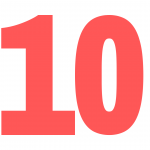Burnout can take many shapes and forms, and often times, identifying the risk factors leading up to it can be tricky. This series will explore the many faces of burnout by offering different perspectives from a panel of experts who presented at the AAD 2019 Annual Meeting in Washington DC. We kick off the series with Elizabeth (Lisa) Swanson, MD. Dr. Swanson is a board-certified dermatologist and pediatric dermatologist on staff at Rocky Mountain Hospital for Children in Colorado.
The path to a career in medicine is a long one. From college to medical school to internship, residency and fellowship, it takes over a decade of education to get to the point where you can actually start your career. By the time a doctor gets their first job, most people have been in the workplace for 10 years. The fortunate thing is that as you progress along this journey, you are able to focus more and more on what you are most passionate about and what you find most interesting. Each year of medical school gets more useful, practical, and hands on. Each year of internship, residency and fellowship allows you to hone in even more on what you find most enjoyable, rewarding, and satisfying. The future is bright. Your whole career is in front of you.
Then you get there. You get to your first job. All the decisions are yours. The patients are relying on you. You are the expert. You deserve it. You worked hard. You studied a lot. You wear the white coat. And you are passionate about your career and you are energetic about your desire to help people. You are now finally going to be “living the dream”.
And then some realities start to hit you. You are spending 2-3 hours every evening after work doing your notes, returning calls to patients, handling administrative tasks. You find yourself checking your EMR app on your days off, before you go to bed, when you are on vacation. You find that patients are not as trusting of their doctors as they used to be and sometimes you feel like a salesman trying to convince a patient that treating their skin cancer really is the right thing to do and trying to reassure them that there are absolutely no dangers to the use of vaseline. You get your first negative review on Yelp and it burns and it makes you feel bad.
While burnout can occur at any point in training and during your career, I think the first few years in practice are when you are most vulnerable to experiencing burnout. You have all these dreams and expectations and visions of what things will be like when you are a practicing dermatologist and reality can be a big pill to swallow.
Here are 10 tips and tricks to prevent and/or treat burnout:
 Be protective of your time away from the office. Our time away from work is what recharges and energizes us so that we can be productive and happy at work. Take breaks from electronics. Take on a new hobby. Take vacation and don’t feel guilty about it. Schedule your home life- it shouldn’t just be whatever time is left over after work- it should be a dedicated space.
Be protective of your time away from the office. Our time away from work is what recharges and energizes us so that we can be productive and happy at work. Take breaks from electronics. Take on a new hobby. Take vacation and don’t feel guilty about it. Schedule your home life- it shouldn’t just be whatever time is left over after work- it should be a dedicated space.
 Exercise, sleep well, and eat a balanced diet. In short, take care of yourself. Exercise is like Ritalin mixed with Prozac- it allows us to focus and improves our overall mood. Sleep is essential for your brain to function at its most effective; eating a balanced diet improves your energy and your general health.
Exercise, sleep well, and eat a balanced diet. In short, take care of yourself. Exercise is like Ritalin mixed with Prozac- it allows us to focus and improves our overall mood. Sleep is essential for your brain to function at its most effective; eating a balanced diet improves your energy and your general health.
 Work as a team with your staff. They want to help and working together allows for better care for patients and a better life for you. Brainstorm together on ways that certain aspects of the day could be more efficient or less tedious. Consider starting the day with a five minute huddle; studies show that a huddle saves you 30-60 minutes throughout the day. Make sure everyone is prepared for any procedures or patient encounters that might be more rigorous or stressful. If there is a patient with special needs- whether they are in a wheelchair or are autistic- discuss ways to prepare for that to ensure things run smoothly.
Work as a team with your staff. They want to help and working together allows for better care for patients and a better life for you. Brainstorm together on ways that certain aspects of the day could be more efficient or less tedious. Consider starting the day with a five minute huddle; studies show that a huddle saves you 30-60 minutes throughout the day. Make sure everyone is prepared for any procedures or patient encounters that might be more rigorous or stressful. If there is a patient with special needs- whether they are in a wheelchair or are autistic- discuss ways to prepare for that to ensure things run smoothly.
 Be grateful to your staff and show your appreciation. Think about giving out a thank you card once or twice a week to someone that goes above and beyond. I ordered several from amazon and I carry them with me along with $5 Starbucks gift cards. When a staff member does something to help a patient or make my life easier, I write a quick note on one of the cards and give it to them. It doesn’t take long at all and it makes them feel really good when their work is acknowledged.
Be grateful to your staff and show your appreciation. Think about giving out a thank you card once or twice a week to someone that goes above and beyond. I ordered several from amazon and I carry them with me along with $5 Starbucks gift cards. When a staff member does something to help a patient or make my life easier, I write a quick note on one of the cards and give it to them. It doesn’t take long at all and it makes them feel really good when their work is acknowledged.
 Make a list – actually write it down on paper- about what your ideal job would look like. Would you be in academics or private practice? Would you be rural or urban or suburban? How many days a week would you work? How many patients would you see in a day? What would you want the staff to be responsible for and what would you want to do yourself? Once you have your “ideal job” on paper, compare that list with your current position. Can you make minor tweaks to help make your current job more ideal or do you need to start thinking about making a change?
Make a list – actually write it down on paper- about what your ideal job would look like. Would you be in academics or private practice? Would you be rural or urban or suburban? How many days a week would you work? How many patients would you see in a day? What would you want the staff to be responsible for and what would you want to do yourself? Once you have your “ideal job” on paper, compare that list with your current position. Can you make minor tweaks to help make your current job more ideal or do you need to start thinking about making a change?
 Try to focus on the positives. You could have a full day of seeing 35 happy and appreciative patients and 1 encounter with someone who was difficult or upset or mean. When you go home that day, you are going to be thinking of the one bad seed. Make a conscientious effort to put that bad interaction in perspective with all the positive experiences that you had that day and that week and that month. If you feel like you could have handled that patient differently, spend a few minutes thinking about that. Come up with a plan for the next time a similar situation happens. And then move on. Don’t let it set up camp in your head. And make a concerted effort to take as much time to celebrate your successes as you typically spend thinking about a perceived failure.
Try to focus on the positives. You could have a full day of seeing 35 happy and appreciative patients and 1 encounter with someone who was difficult or upset or mean. When you go home that day, you are going to be thinking of the one bad seed. Make a conscientious effort to put that bad interaction in perspective with all the positive experiences that you had that day and that week and that month. If you feel like you could have handled that patient differently, spend a few minutes thinking about that. Come up with a plan for the next time a similar situation happens. And then move on. Don’t let it set up camp in your head. And make a concerted effort to take as much time to celebrate your successes as you typically spend thinking about a perceived failure.
 Cut yourself some slack. No one’s perfect, not even you. And that is ok. Drew Brees has the best completion rate of all quarterbacks over a career at 67.3% and Steve Nash has the best free throw percentage over a career at 90%. Realize neither of these numbers is 100% and these players are the best of the best. The important thing is that you try hard, you strive to do what’s right, you listen to your patients, you are empathetic with people, and you forgive yourself when you make a misdiagnosis or have a bad outcome from treatment. Remember, in the words of Stuart Smalley from SNL: “You’re good enough, you’re smart enough, and doggone it, people like you.”
Cut yourself some slack. No one’s perfect, not even you. And that is ok. Drew Brees has the best completion rate of all quarterbacks over a career at 67.3% and Steve Nash has the best free throw percentage over a career at 90%. Realize neither of these numbers is 100% and these players are the best of the best. The important thing is that you try hard, you strive to do what’s right, you listen to your patients, you are empathetic with people, and you forgive yourself when you make a misdiagnosis or have a bad outcome from treatment. Remember, in the words of Stuart Smalley from SNL: “You’re good enough, you’re smart enough, and doggone it, people like you.”
 Practice mindfulness. Put down your juggling balls for a little bit and pay attention to your surroundings without worrying about your to do list. Activities that encourage mindfulness include:
Practice mindfulness. Put down your juggling balls for a little bit and pay attention to your surroundings without worrying about your to do list. Activities that encourage mindfulness include:
- hobbies (yoga, fly fishing, adult coloring books)
- meditation (try free apps such as headspace or calm that have 10-minute meditation exercises that are easy to do at any time in almost any place- headspace is my favorite)
- start a gratitude journal (write down 3 things you are grateful for every morning or every night)
 Get involved. Go to dermatology meetings. Talk with other dermatologists and doctors. Get involved with your local dermatology society, the AAD, or your local medical society. Work to be a part of the solution and to make life better for all doctors and patients. It will help give you a feeling of control rather than overwhelming powerlessness.
Get involved. Go to dermatology meetings. Talk with other dermatologists and doctors. Get involved with your local dermatology society, the AAD, or your local medical society. Work to be a part of the solution and to make life better for all doctors and patients. It will help give you a feeling of control rather than overwhelming powerlessness.
The healthcare system in America has created an environment that is causing harm to healthcare providers. Things need to change with the system in order to trigger a real and long-lasting decrease in physician burnout. However, systemic change takes time and for the short term we need to develop ways that allow us to be the kind of doctor that we want to be, to help patients, and to find passion in the career path that we have chosen. I believe the 9 steps above will help us survive the coal mine until conditions improve.
The practice of medicine is a wonderful career path. Dermatology is an amazing specialty. Being able to help people improve their quality and quantity of life is a privilege. Our passion to care for others gives us purpose. And hopefully this article helps you to “live the dream”.
Did you enjoy this post? Find more on Navigating Your Career here.


